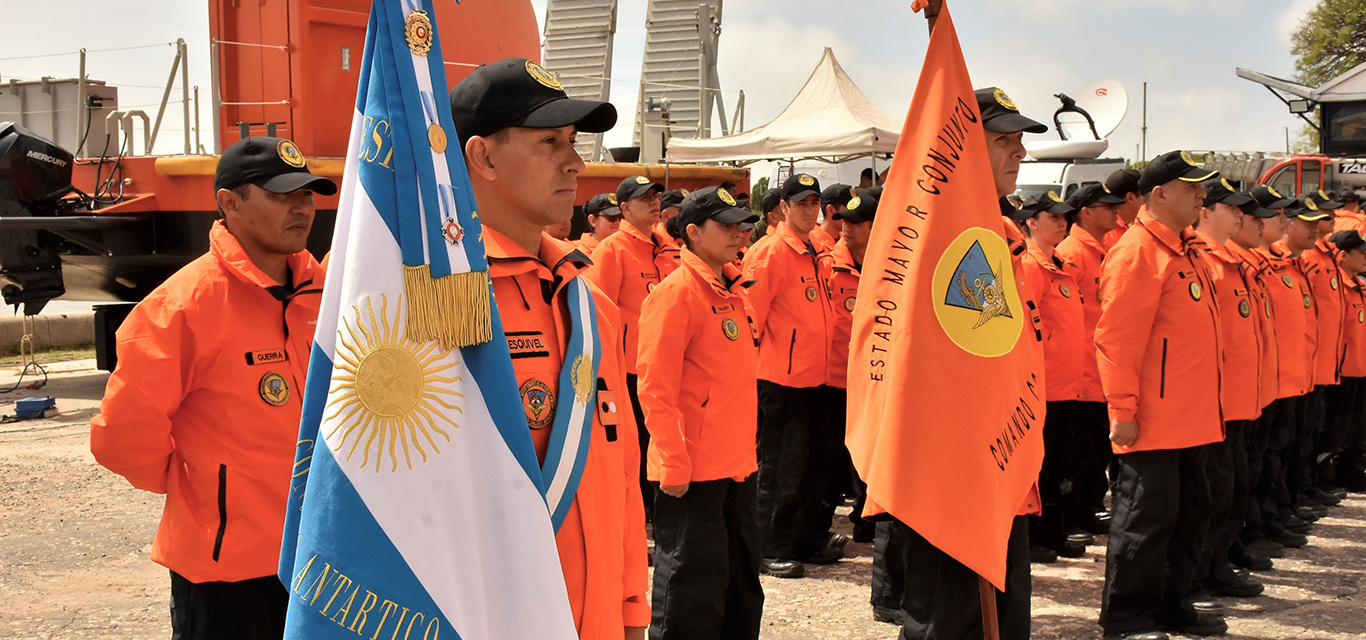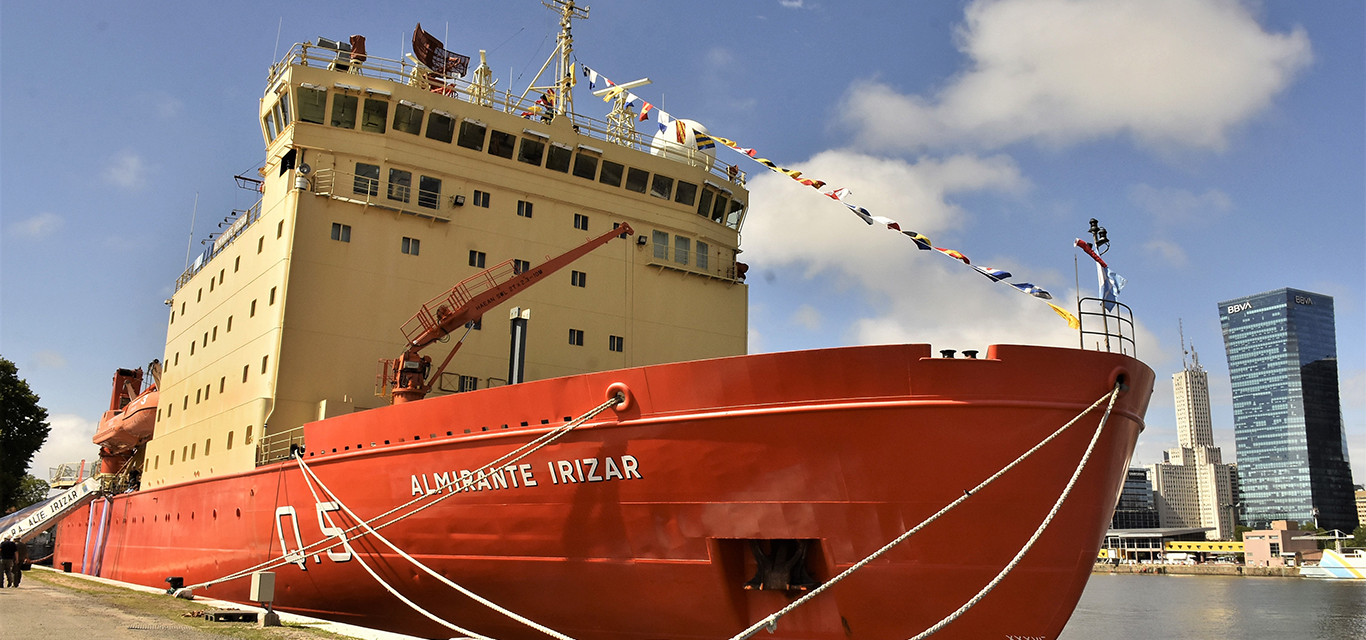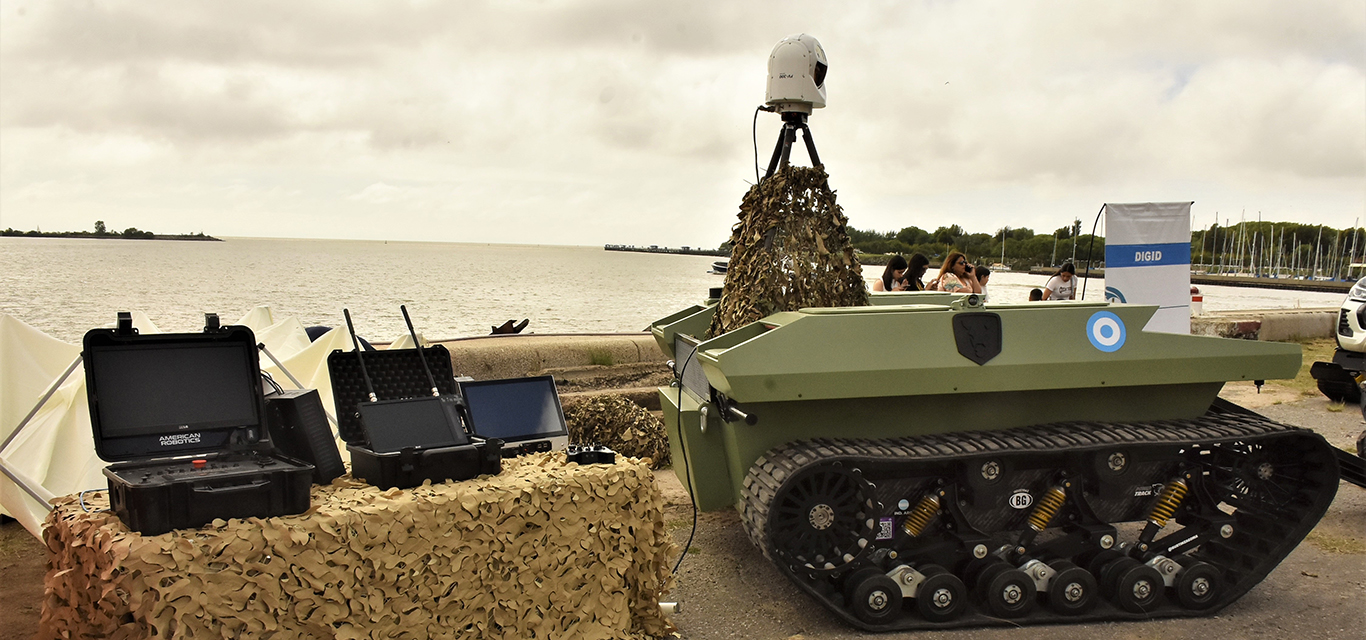El Ministro de Defensa, Jorge Taiana, y el Jefe del Estado Mayor Conjunto de las Fuerzas Armadas, Teniente General Juan Martín Paleo, presidieron el pasado miércoles 15, la ceremonia de inicio de la 120° Campaña Antártica de Verano (CAV) 2023/2024, que se realizó en el Apostadero de la ciudad de Buenos Aires, donde se encuentra amarrado el Rompehielos ARA “Almirante Irízar”.
El buque iniciará la carga para abastecer a las trece bases antárticas, trasladará las estructuras para la construcción de la casa en la Base Conjunta Petrel y llevará a bordo los dos nuevos helicópteros Sea King, adquiridos recientemente a través del Fondo Nacional de la Defensa (FONDEF).

Del acto participaron también el Ministro de Economía, Sergio Massa; el Ministro de Ciencia, Tecnología e Innovación, Daniel Filmus; el Jefe del Ejército, Teniente General Guillermo Pereda; el Jefe de la Armada, Almirante Julio Guardia; el Subjefe de la Fuerza Aérea, Brigadier Mayor Hugo Schaub; y el Comandante Conjunto Antártico, General de Brigada Edgar Calandin.
“La tarea antártica ha sido y es fundamental para la Argentina que es un país bicontinental, que reconoce la creciente importancia del Atlántico Sur por sus riquezas naturales renovables y no renovables y por su valor estratégico”, destacó el Ministro Taiana.

Por su parte, el General de Brigada Calandin expresó: “Esta gestión se ha caracterizado por establecer los cimientos institucionales, físicos y sociales del programa antártico, ampliando la presencia del Estado y consolidando un plan director de evolución que luego de cuatro años ha alcanzado todos los objetivos”.

El rompehielos operará durante 120 días, en los que abastecerá de víveres, combustible y materiales a las trece bases antárticas, desplegará a los científicos y personal embarcado y trasladará las estructuras para la construcción de la nueva Casa Petrel, que volvió a ser base permanente luego de 50 años.
El periplo del Irízar está dividido en tres etapas que permitirán el aprovisionamiento y relevo de las dotaciones de todas las bases que Argentina mantiene operativas: siete permanentes (Esperanza, Marambio, San Martín, Orcadas, Carlini, Belgrano II y Petrel); y seis temporarias, es decir, activas únicamente durante el período estival (Matienzo, Brown, Decepción, Primavera, Cámara y Melchior).
Entre los objetivos de esta nueva CAV se encuentra el inicio de la Fase II del Plan de Desarrollo de Petrel, con el traslado de 190 toneladas de estructuras, 30 toneladas de columnas y 54 toneladas de aislación para la construcción de la nueva casa. También se prevé la construcción de tres nuevos laboratorios multidisciplinarios en las bases Marambio y Carlini y uno emplazado en Isla de los Estados, que se complementan con los tres ya construidos en las Bases Esperanza, Orcadas y San Martín, a su vez se creará un nuevo centro de investigación de Rayos Cósmicos en la Base San Martín.

También, en la Base Belgrano II, continuarán los trabajos para la instalación de dos antenas de CONAE, se reforzará el desarrollo del proyecto Hidroponia con apoyo del INTA y se trabajará en la construcción de dos refugios, uno emplazado en esta base y el otro en Esperanza. También se destaca el avance en la construcción del laboratorio de hidrógeno verde, en la Base Esperanza.
La CAV además de hacer el repliegue de personal y el abastecimiento de víveres y combustible, en los viajes de vuelta al continente el rompehielos Irízar continuará con el plan de evacuación de residuos históricos. La mayor parte de la basura que se genera en la Antártida se debe retirar obligatoriamente a fin de cumplir con el Tratado Antártico vigente para la protección del medio ambiente.
Se emplearán además del ARA “Almirante Irízar” —el único buque con capacidades de rompehielos, investigación científica, tecnológica y logística de la región— y otras dos unidades navales: el transporte ARA “Canal Beagle” y el aviso ARA “Estrecho Bahía Agradable”. Entre los medios aéreos se cuentan un avión de Transporte Hércules C-130, dos helicópteros BELL 212 desplegados en Marambio de forma permanente y los dos nuevos helicópteros SEA-KING embarcados en el Rompehielos. Además, estarán disponibles a requerimiento un Boeing 737 y un Fokker F-28.






